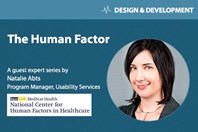TESTING WHITE PAPERS, APPLICATION NOTES, & CASE STUDIES
TESTING VIDEOS, WEBINARS, AND PODCASTS
-
TEAM Technologies, a company known for making toothbrushes, is now on the front lines of making rapid test kits for COVID-19. They plan to manufacture 3 million kits by the end of the year and increase production to 3 million per month for as long as tests are needed.
TESTING NEWS
-
Materials not subjected to early testing can contain impurities/contaminants that impact downstream biocompatibility issues, which can increase the risk of regulatory hurdles.
-
Molecular diagnostics is increasingly used for the rapid detection and identification of existing and emerging pathogens. The need for rapid results has required testing to move from normal settings, such as physician’s offices, to smaller, more widespread, and often temporary point of care (POC) locations.
-
Medical device manufacturers and designers must overcome various challenges to succeed in an expanding global marketplace, challenged along the way by aspects of design, research, validation, and bringing their devices to a competitive market in a cost-effective manner.
-
Insight on how engineers can gain an understanding of how the process works and how they can participate productively.
-
How do you design a usability test that mimics the panicked, stressful situation that a user may be in when he or she is using your medical device in the real world?
-
Because the validation test is required human factors testing, it can be tempting to skip over preliminary human factors activities during the development process. However, this approach is problematic from both a device usability and a safety standpoint.
-
The first article in this series, Risk-Based Approaches To Establishing Sample Sizes For Process Validation (June 2016) provided and established the relationship between risk and sample size. This article will demonstrate the use of reliability-based life testing for process validation.
-
When studies are successful, human factors (HF) validation can be as straightforward as checking off the boxes on a study protocol. If all the pieces of testing don’t come together as planned, however, HF validation can be a complicated endeavor. At the recent HFES Symposium on Human Factors and Ergonomics in Health Care, we shared our thoughts on how to know whether or not you’ve cleared that last hurdle.







